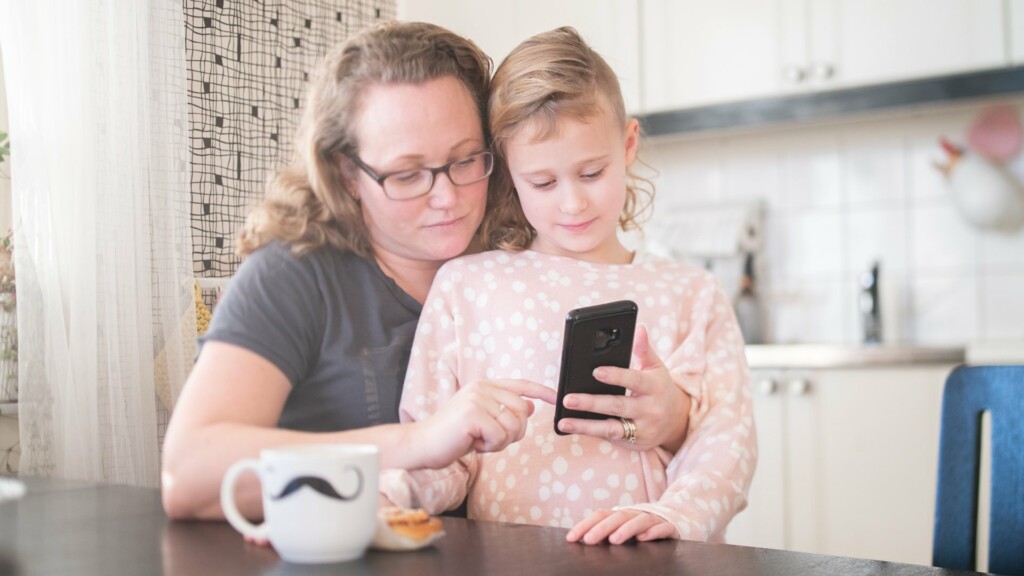
How to help your child keep safe online
This article explains how you can help your children to protect themselves; however, it’s also a good idea to learn the basics yourself first.
A large part of our children’s lives is played out online. Thanks to the Internet, they can look up information for their school projects, make new friends, listen to their favourite music, and delve deeper into whatever interests them. But the Internet and social media can also become a crime scene, where scam artists view children and young people as easy prey, tricking them out of information and making a quick buck.

About Tänk säkert
Tänk säkert is a campaign on behalf of the Swedish government to ensure a safer digital society. The campaign is a partnership between Myndigheten för samhällsskydd och beredskap (MSB), polisen and Internetstiftelsen, and its aim is to increase awareness of issues relating to information and cyber security.
- Help your child to protect themselves against viruses and other kinds of malware
Attackers commonly use different kinds of viruses and malware to steal valuable information and money. In various ways, they try to trick us into downloading harmful apps or software.
This is why you, the guardian, need to teach your children a fundamental approach:
- Only download apps and software from their official websites, or from the integrated Windows and Mac OS stores, called Microsoft Store and the Apple App Store, respectively.
- Avoid clicking on links, and don’t open attachments in emails and other messages.
- Never download apps and software when told to do so online by someone you don’t know.
As guardian, you also need to help your child to update software, apps, and operating systems as soon as updates are available. This is because updates block known security gaps, which can otherwise be used by attackers.

In addition to this, it’s important to teach your child to think critically when surfing online, playing online games, and using various messaging services. For example, it is highly unlikely that your child really can get a free mobile phone, or free virtual currency such as Robux on the Roblox gaming platform, by clicking on a certain link. Arrange with your child that they will come to you, as the parent, for help with investigating ads, special offers, and links in messages. You can then decide together whether or not it’s genuine.
If you share a family computer, not only your child’s information is at risk, but the entire family’s. Make sure that you have an effective antivirus protection installed, and keep it updated. Also make sure that the computer’s firewall is enabled.
- Help your child to create passwords that protect their information and digital identity
Most user accounts that children have for online games and social media are protected by one single password. The same is true of their email account, if they have one. If a password is disclosed, unauthorised persons can access very personal information, but they can also pretend to be your child.
So it’s important that you tell your child never to share their passwords – or those of other family members – with anyone outside of the family. It has been seen that children and young people are particularly careless in this respect. It’s common, for example, for children to ask a friend to log into their Snapchat account to help keep a so-called Snapchat streak going, when they are unable to do so themselves.

You also need to help your child to create strong passwords, and to emphasise the importance of having different passwords for all their accounts.
A strong password must be:
- Long – at least 12 characters, ideally more
- Unusual – it must not be possible to guess it
- Impersonal – it must not be possible to link it to you
- Unique – this means that you must have different passwords for each service
Also remember that passwords are easy to forget, not least for children. So you, as their guardian, need to help your child to remember them. You can do this by using a password manager, or by writing down your child’s passwords on a piece of paper, which you treat as a valuable document.
- Talk to your child about common scams and money in the digital world
Even though children are not the most vulnerable target group for Internet-related scams, it is important that children understand and can protect themselves against the risks that do exist.
For example, scam artists may try to trick children and young people into buying things that don’t exist. Your child may see enticing ads for cheap mobile phones, or someone might contact your child wanting to sell popular skins for various games for next to nothing. Agree with your child that they will always ask a parent before buying anything online. You can then decide together whether or not a special offer is genuine.
Scam artists may also ask children to photograph or disclose their parents’ card details. So, as a parent, you need to teach your child never to do this. If your child is relatively young, you may also need to explain that card details are linked to real money, and that a lot of harm can be done if you share them with anyone, even though it might seem quite innocent in your child’s eyes.
- Help your child to protect their mobile phone – and the information on it
You should help your child with the following, so that they can protect their mobile phone:
- Activate the screen lock – the shorter the screen lock activation time, the more secure the phone is.
- Choose a password for the screen lock that has more than four digits – ideally a long password with at least 12 characters.
- Enable facial recognition.
When your child is old enough to have their own mobile phone, you need to talk about safe mobile habits. Mobile phones contain a lot of valuable information, and most of us (both adults and children) never log out of social media, email accounts, or other services.
If your child’s mobile phone falls into the wrong hands, they are at risk of being excluded from social media, or of someone using the accounts in your child’s name. If there are also sensitive photos on the mobile phone, they could, for example, be posted online with no checks, or be used to blackmail your child.

Remember!
It’s safer to let your child have their own mobile phone than to lend them yours, as your mobile phone probably contains even more valuable information. Maybe you have an old mobile phone lying around that your child can use? The younger your child is when they get their first mobile phone, the greater the opportunity for you, as an adult, to pass on your knowledge about how to use a mobile phone safely.
- Consider where your child is at risk of being contacted by adults who wish them harm
In this context, it’s all about being aware, especially of online games with a chat function and various social media. If you’re able to, it’s a good idea to be there from the outset and help your child with games or other online services. This means that you, as a parent, are an active part of their digital everyday life from an early age, instead of monitoring their activity.
Agree that your child should ask you as a parent when a message is received. You can then help to assess it. The younger the child, the easier it is to get them to accept these kinds of agreements.
There will always be adults who wish to harm children, for example by grooming them, which means that an adult makes contact with a child for sexual purposes. But remember that children who spend a lot of time on such platforms also become good at identifying this.

